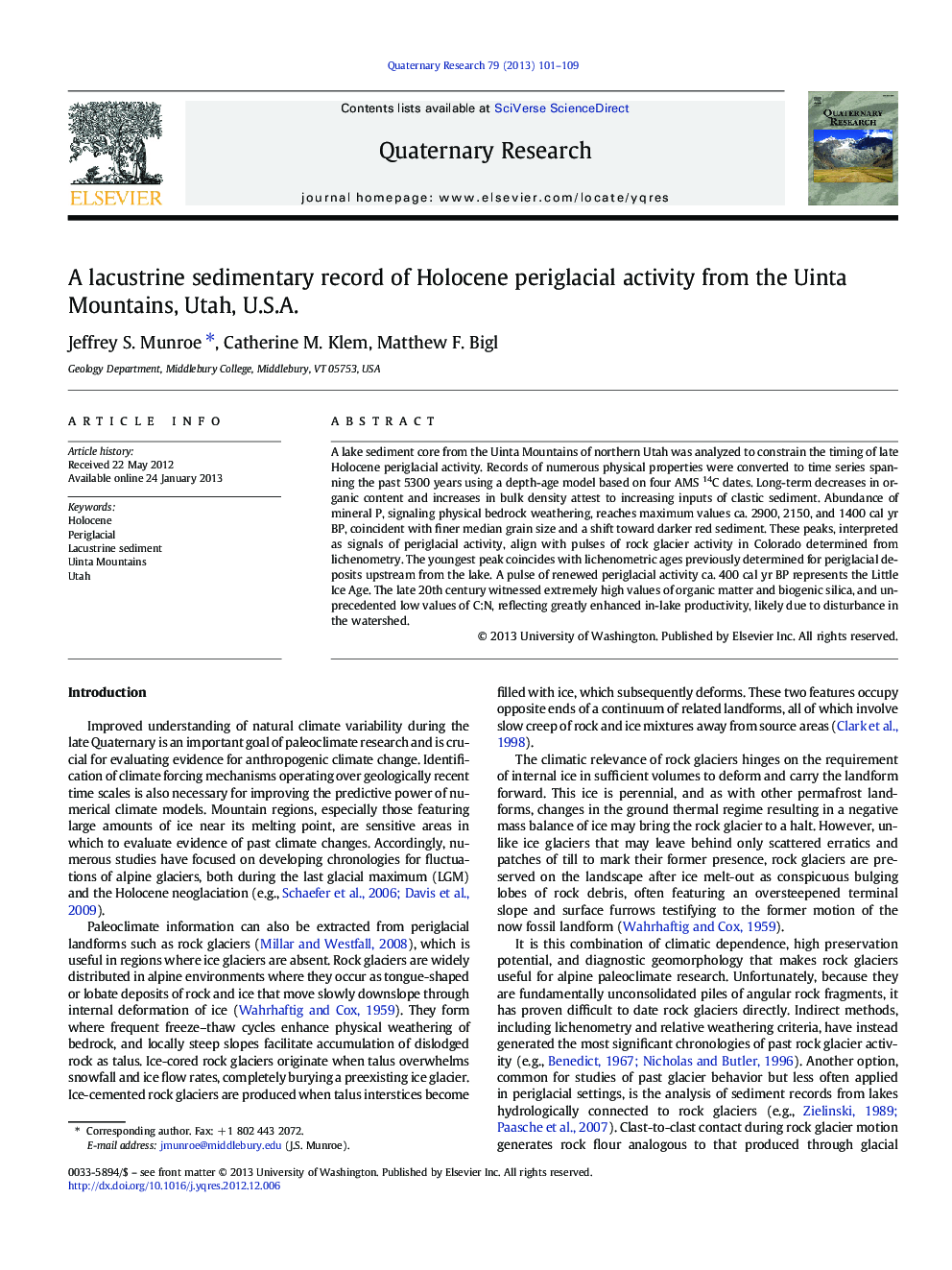| Article ID | Journal | Published Year | Pages | File Type |
|---|---|---|---|---|
| 1045476 | Quaternary Research | 2013 | 9 Pages |
A lake sediment core from the Uinta Mountains of northern Utah was analyzed to constrain the timing of late Holocene periglacial activity. Records of numerous physical properties were converted to time series spanning the past 5300 years using a depth-age model based on four AMS 14C dates. Long-term decreases in organic content and increases in bulk density attest to increasing inputs of clastic sediment. Abundance of mineral P, signaling physical bedrock weathering, reaches maximum values ca. 2900, 2150, and 1400 cal yr BP, coincident with finer median grain size and a shift toward darker red sediment. These peaks, interpreted as signals of periglacial activity, align with pulses of rock glacier activity in Colorado determined from lichenometry. The youngest peak coincides with lichenometric ages previously determined for periglacial deposits upstream from the lake. A pulse of renewed periglacial activity ca. 400 cal yr BP represents the Little Ice Age. The late 20th century witnessed extremely high values of organic matter and biogenic silica, and unprecedented low values of C:N, reflecting greatly enhanced in-lake productivity, likely due to disturbance in the watershed.
